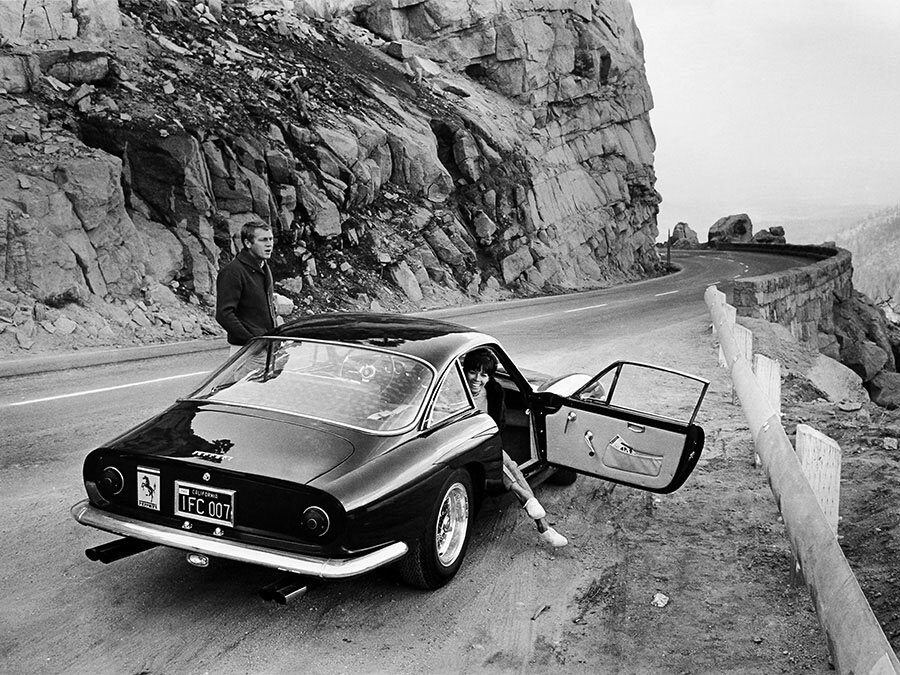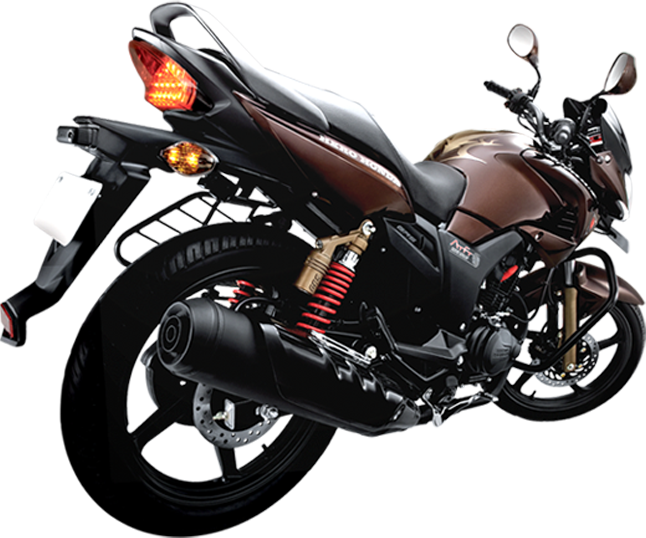1963 Ferrari Berlinetta Lusso
Guide: Ferrari 250 GT Berlinetta Lusso

Background
For 1963, Ferrari offered customers a choice of four models: the grand range-topping 400 Superamerica, the four seat 250 GTE (soon to be replaced by the 330 America), the 250 GTO racing car and the new 250 GT Berlinetta Lusso.
The 250 GT Berlinetta Lusso was Ferrari's off-the-peg two-seat road car and the last production model powered by Gioacchino Colombo's eponymous '250' V12.
By contrast, Ferrari's other two-seat road car, the 400 Superamerica, had a four-litre Colombo V12 and offered a far greater degree of customisation, albeit at a considerably higher price.
With its elegant Pininfarina styling, finely tuned chassis and powerful engine, the 250 GT Berlinetta Lusso proved a fitting finale for what was arguably Ferrari's most iconic model line.
The 250 moniker first appeared in 1952 and subsequently graced all manner of production and competition machinery.
Often equipped with outstandingly beautiful coachwork, these cars quickly came to be regarded as the quintessential classic Ferraris.
While myriad racing cars of the late 1940s and early 1950s brought the marque to international prominence, no single Tipo was more crucial to Ferrari's ongoing success than the 250.
Chassis
Given type number 539/U, the Lusso's chassis was a tubular steel frame with an identical 2400mm wheelbase to the outgoing SWB Berlinetta.

To increase cabin space, track was widened by 41mm at the front and 38mm at the rear. Additonally, the engine was re-positioned slightly further forward in the chassis.
Front suspension was via independent unequal length wishbones. At the back was a live axle with semi-elliptical springs located by parallel trailing radius arms. A Watts linkage imported from the 250 GTO was also installed at the rear.
Telescopic Koni shocks and coil springs were fitted all round along with disc brakes and Borrani wire wheels.
The rims measured 15 x 6.5-inches and normally came shod with Pirelli Cinturato tyres.
A 114-litre fuel tank was located just ahead of the rear axle and had a single filler neck.
Engine & Gearbox
The Lusso's all-alloy engine was the final three-litre iteration of Colombo's short-block 60° V12.
It featured two valve heads, a single overhead camshaft for each bank of cylinders, single plug ignition, two coils and wet-sump lubrication.
Displacement was the familiar 2953cc thanks to a bore and stroke of 73mm and 58.8mm respectively.
Designated type 168/U, the compression ratio was 9.2:1 and three twin choke Weber 36 DCS downdraught carburettors were fitted.
General improvements meant output was now 10bhp higher than the Lusso's predecessors.
In this latest configuration, the three-litre Colombo engine produced 250bhp at 7500rpm and 178lb-ft at 5500rpm.

Transmission was via an all-synchromesh four-speed overdrive gearbox, a single-plate clutch and in-house differential. Two alternative axle ratios were available.
Bodywork
Few would dispute the 250 GT Berlinetta Lusso was one of the prettiest Ferraris ever built.
Designed by Pininfarina, body fabrication took place at the Scaglietti works in Modena.
Steel was used for all panels with the exception of the doors, boot lid and bonnet which were aluminium.
Clean, uncluttered and extremely elegant, the front end featured uncovered headlights, a wide air intake with traditional egg crate grille and a distinctive three-piece bumper arrangement. Supplementary lights were mounted outboard of the grille and there was a shallow hood blister to clear the carburettors.
The glassy five-window cockpit had slim pillars and a fastback profile.
The flush rear fenders were part of one continuous line from front to back.
A Kamm tail with a discrete upper lip spoiler was used for reasons of aerodynamic efficiency. The Lusso's cockpit treatment and rear end were copied by Pininfarina for the 330 LM Berlinetta racing cars built to contest the 1963 Le Mans 24 Hours.
A conventional single-piece wraparound bumper was fitted at the back.
The bumpers, bezels, window frames, wipers, badges, release catches, exhaust tips and intake shrouds were all chrome plated.
Interior

Inside, thanks to those slim pillars and large glass area, visibility was extremely good.
Unusually, the tach and speedometer were housed in enormous cowls located in the centre of the dash.
Directly behind the wood-rimmed three-spoke steering wheel was a slim binnacle with five supplementary gauges. These were typically for fuel level, water temperature, oil pressure and oil temperature while the fifth instrument was variously a clock or ammeter.
The dash usually came upholstered in black leather and was also home to a variety of centrally mounted flick and toggle switches.
Leather was used to trim the bucket seats, door panels, transmission tunnel, partially quilted rear quarters and luggage straps.
Options
Official options were limited to colours and axle ratios. However, some VIP customers were able to enhance their cars with uprated camshafts, higher compression ratios and six Weber 40 DCL or DCZ carburettors.
Weight / Performance
Ferrari quoted a 1020kg dry weight and a top speed of 150mph.
0-62mph took between 6.5 and 7.5 seconds depending on the axle ratio.
Prototypes
Prior to production starting two prototypes were built.
The first uniquely received bodywork fabricated by Pininfarina as opposed to Scaglietti. This car, chassis 3489 GT, was painted silver, had twin tail lights and a split hood blister. It was displayed at the Paris Motor Show in October 1962 and also starred in a series of publicity shots for the new model.
The second prototype, chassis 4053 GT, had bodywork fabricated by Scaglietti. It was painted pale yellow, came with single tail lights (albeit larger than standard) and was shown at the Turin Motor Show in November 1962.
Neither of the prototypes had the supplementary front lights that were fitted to production variants.
Production
Customer deliveries began in early 1963.
Production continued until late 1964 at which point the Lusso was replaced by the 275 GTB.
350 Lussos were built of which 20 are understood to have been right-hand drive.
Famous owners included actors Steve McQueen (chassis 4891 GT) and James Coburn.
250 GT Berlinetta Lusso Speciale
Two early Lussos received special coachwork.

The first was chassis 4335 GT. Built for Battista Pininfarina, it came with with flush door handles, a smooth engine blister, a dashboard with conventionally positioned instruments and an elongated nose with covered headlights. It was displayed at the London Motor Show in October 1964.
The second customised example was 4385 GT. This car was ordered by Felice Riva of Milan who was a personal friend of Enzo Ferrari and heir to the textile group, Vallesusa.
Riva wanted a 250 GTO but the competition department was booked out for months to come. Instead, Enzo Ferrari agreed to build Riva a special Lusso. The car came with a GTO-inspired nose and uprated engine that featured six carburettors and high lift camshafts.
Competition History
Despite the fact it was not designed for competition, several Lussos did quite well in racing and hillclimbs.
Among the earliest owners to venture onto the track was Baldassare Taormina who entered his red car (chassis 4459 GT) for the Targa Florio on April 26th 1964. Partnered by Pasquale Tacci, the Sicilian pair finished a creditable 13th overall and fifth in the three-litre GT class.
Another Lusso to have raced in period was chassis 4965 GT. This light blue car was delivered to French domiciled Swiss amateur, Robert Blouin, who raced under the pseudonym "Bouchon".
Blouin used his Lusso in a combination of road rallies and circuit races. His most notable result came in the Spa 500km World Sportscar Championship race on May 16th 1965 where he placed 16th overall and third in the three-litre GT class.
Chassis 5367 GT (the dark blue 1964 Geneva Motor Show car) was acquired new by Charles Muller. Muller had it prepared for competition by the Swiss Ferrari importer, Garage Monteverdi. Equipped with six Weber 38 DCN carbs and GTO camshafts, Muller raced and hillclimbed his Lusso around Europe including at several World Sportscar Championship events.
One notable result was ninth overall at the 1964 Zolder Grand Prix for GT cars on July 19th. Muller followed this up with 24th overall and fifth in the three-litre GT class on the 1964 Tour de France held between September 11th and 20th where he was co-driven by Heini Walter.
Text copyright: Supercar Nostalgia
Photo copyright: Ferrari - https://www.ferrari.com & William Claxton
More Ferrari articles from Supercar Nostalgia
Source: https://supercarnostalgia.com/blog/ferrari-250-gt-berlinetta-lusso


0 Komentar